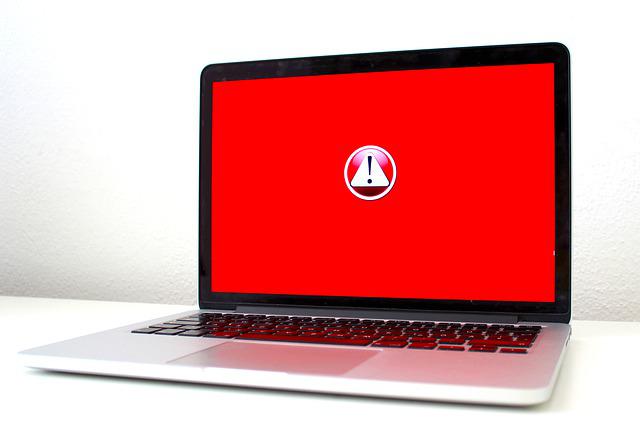A dialogue box with the words “Data Error Cyclic Redundancy Check” has shown while moving a file from one device to another. That’s just a data copying issue that occurred on the opposite end of the chain.
Corrupt data or an incorrect hard disc connection can be to blame, or it might be any of a number of other possibilities. In most cases, the cyclic redundancy error (CRC) is caused by hardware problems, but it can also be caused by software.
There are a number of reasons why this can be happening, including a USB/portable device issue, a faulty drive, or a bad sector. The file may be corrupted, or the problem may be caused by a corrupted driver.

A USB/port device or faulty file can be the source of the issue, and this should be investigated first. So, if you want to see if the port device is working properly, try connecting to another port. If there is no issue with that port, then the prior one was to blame.
It’s also possible to verify faulty files by sharing the file with other drivers, and if you can’t do so, it’s possible the file is corrupted and you’re experiencing this difficulty.
Before delving into the details of a problem, it is recommended that the two general approaches outlined above be tried first. After checking your USB/port and file, if everything is fine, you can proceed to the next steps: –
Read Also:
Understanding Data Error Cyclic Redundancy Check
Data Error Cyclic Redundancy Check, often abbreviated as CRC, is a type of error detection code used to identify errors in data during transmission or storage. When a CRC error occurs, it indicates that the data being read has been corrupted or altered in some way.
This error is commonly encountered when accessing files on storage devices such as hard drives, SSDs, USB drives, or optical discs.
Causes of Data Error Cyclic Redundancy Check
Several factors can contribute to the occurrence of Data Error Cyclic Redundancy Check:
- Physical Damage: Physical damage to the storage medium, such as scratches on a CD/DVD, bad sectors on a hard drive, or electronic component failure, can lead to CRC errors.
- File Corruption: Corruption of files due to improper shutdowns, software bugs, or malware infections can trigger CRC errors when attempting to access those files.
- Faulty Cables or Connections: Poorly connected or damaged cables connecting storage devices to the computer can cause CRC errors during data transfer.
- Power Surges or Fluctuations: Power surges or fluctuations can disrupt data transmission and result in CRC errors, especially when writing data to storage devices.
- Software Issues: Incompatibility between software applications, outdated drivers, or operating system issues can lead to CRC errors when accessing files or performing data operations.
What To Do If You Get A Data Error Message? Redundancy Testing
Look around.
1. Use chkdsk
Chkdsk in Windows can be used to check the disc, file system corruption, and bad sectors for any problems. Not only does it verify or scan for faults, but it also fixes them. As a result, this is the best option for dealing with corrupt files or drives.
We now need to specify the drive letter in order to run the chkdsk command. There have been a few instances where people have been unable to locate their drive letter. As a result, they may count on us to assist them. Please follow the instructions below if you can’t discover your device letter: –
Step 1: Connect the hard disc to the computer in the first step. If you’re having problems with your primary hard drive, you can connect it to the other computer and utilise it as a backup.
Step 2: After the first step, press the Windows key and the letter ‘E’ simultaneously. Check to see whether your device is listed. Then hit WINDOWS + R to restart the computer. Afterwards, input ‘Device Manager’ and click ENTER, and you’re done! This is the final step, so click twice on the dsk drives.
Step 3: You should see your connected device in the list now. If not, perform a hardware scan by selecting “Scan Disk Drives” from the context menu. Right-click on the drive and select “Update Driver Software” from the drop-down menu. This will automatically look for and install the latest driver software.
Step 4: Finally, hold down the Windows key while pressing R. Next, open the Run box and type “diskmgt.msc” and press Enter.
Step 5: Locate and choose your hard drive from the list. The disc will need to be reactivated if you see a black bar over it, indicating that it is currently unallocated. Next, click on Windows. Then open the command prompt as an administrator and enter the command
Step 6: Now type diskpart and hit enter to launch the application. Press the Enter key to complete step of the automount process. Make sure the letter is showing up by attaching the troublesome drive once more and seeing if it does or does not.
Using the device letter, select the disc you want to inspect, such as a USB or the primary hard drive. The context dictates what to look for. However, it’s always best to start with an external sensor.
To verify the drives, perform the following steps:
Step 1: To begin, press the Windows key on your keyboard. The command prompt is the next step. Once you’ve done that, select “Administrator.”
Step 2: Press the Enter key and type chkdsk C:/f. To replace “C,” write the letter of your device.
Step 3: To open Windows Explorer, hold down the Windows key and press the letter E.
The message “chkdsk cannot run because the volume is in use……….” appears, type Y and tap enter. Then restart the computer to complete this process.
Step 4: Finally, just sit there and wait for it all to be over. The results of the disc check will be displayed once the process has finished. It’s highly likely that this would have provided a solution. However, if the issue persists, try running chkdsk before to booting into Windows.
The problem would have been fixed if this had been done. Logging into the window will show you.
2. Using Disk Utility
To scan and repair faulty files and drivers using chkdsk is the best way, although this method of checking disc utilities is more convenient. To perform a quick and painless check of our computer’s hard drive, simply follow the easy instructions listed below:
Step 1: To begin, hold down the Windows key while pressing and holding the letter “E” to bring up Windows Explorer.
Step 2. Right-click on the drive you wish to examine and select “properties.” Once you’ve done so, tap on the TOOLS tab and select ‘CHECK’ from the error check box.
Step 3: A pop-up window would show up on your screen. Start by selecting the option to “automatically correct file system errors.”
Wait for the procedure to finish, which could take a few hours to complete. Your problems would have been resolved by the time you finished the course.
3. Format
As a last resort, we can use the quick format approach if none of the preceding options work. As a result of listening to a rapid format, if you are concerned about losing your valuable data, please don’t worry.
For the uninitiated, it merely listens to a table that aids in locating all of the data on the disc. If you don’t make a new duplicate to replace the old one, the data won’t be lost. So, as long as you don’t copy anything new and just run a Quick scan, data l is safe.
You can then use a data recovery programme to get your files back after scanning. Getting well again involves the following steps:
Step 1: Connect the faulty drive to the computer as the first step. If you’re having problems with your primary hard drive, you can connect it to the other computer and utilise it as a backup. Afterwards, press the Windows key with the letter E to open Windows Explorer.
Step 2: Right-click on the faulty driver to bring up the context menu. Click on the format button, then select quick format, and click on the Start button.
Wait for the Quick format to complete before continuing. Afterwards, you can conduct a check disc operation like chkdsk or check disc utility. Check out techniques 1 and 2 for more information and thorough processes.
The final step is to recover your files by downloading a data recovery software. Recovering your important data is now possible. If this is the case, you may choose to seek the assistance of an IT professional.
Read Also:
Conclusion
In this post, we’ve attempted to cover all of the most common solutions to this problem. Any professional should be contacted if this doesn’t work. Also, make regular use of the chkdsk or Check utility disc operation utilities to keep your device in good working order.


